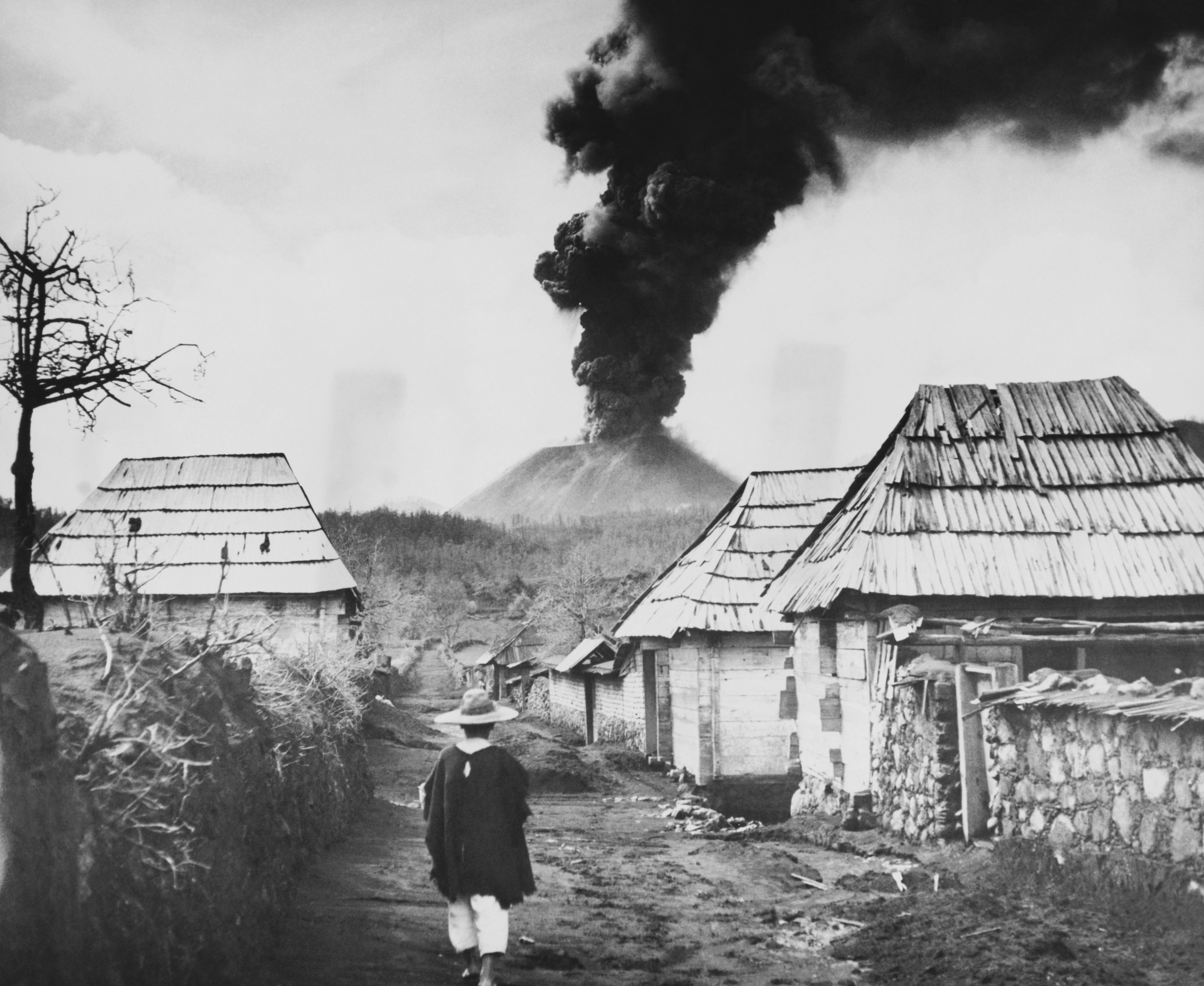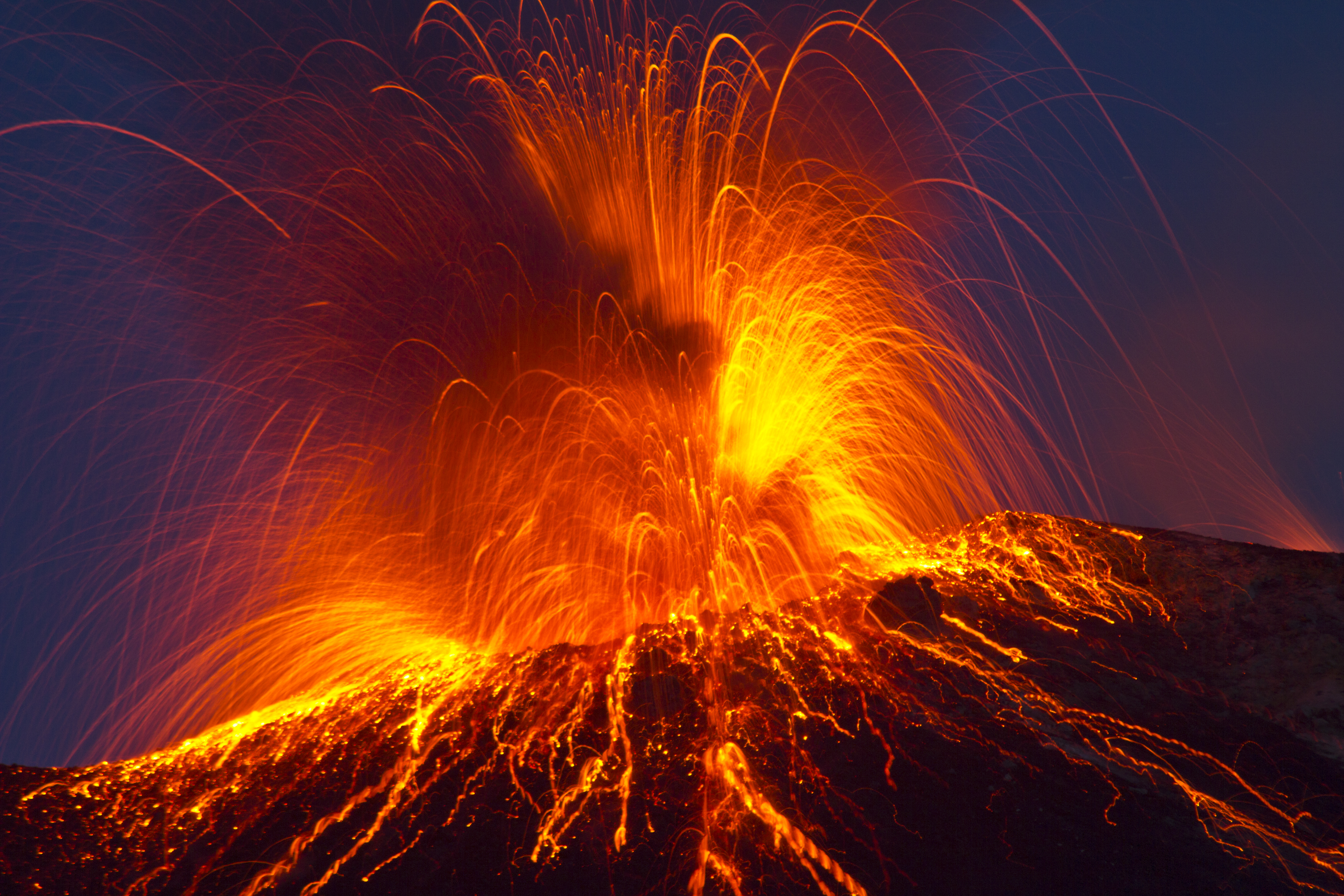Cinder cone is a type of mound that forms around certain volcanoes . Cinder cones are sometimes called scoria cones. They form from eruptions that deposit material around a central vent. The vent is a hole where molten rock and hot gas erupt from the ground. The molten rock is called magma underground and lava after it erupts on the surface. In many volcanoes, liquid lava flows out along the ground. A cinder cone, on the other hand, forms when magma does not erupt smoothly. Instead, lava emerges in pulsating fountains of glowing hot particles. The particles are called cinders or scoria. This type of eruption is commonly called a Strombolian eruption, after Italy’s Stromboli volcano. Stromboli has erupted in this manner for hundreds of years.

The material shot into the air by an eruption is called ejecta. Many of the cinders in ejecta are too large to be carried far by the force of the eruption or by wind. The cinders gradually accumulate around the edge of the vent, creating a cone-shaped hill. The slopes of cinder cones are commonly near the angle of repose. This angle is the critical angle above which the particles become unstable and slide down. Most cinder cones are active for only a few years.

Cinder cones are common in volcanic regions around the world. Some cinder cones, such as Cerro Negro in Nicaragua, are considered distinct volcanoes. However, in many cases a cinder cone forms around a single vent on a larger volcano. Such cones are found on Mount Etna in Italy and Mauna Kea in Hawaii.
One of the most famous cinder cones is Paricutín in Mexico. In February 1943, a local farmer watched cracks open in the ground of his cornfield. Jets of ash erupted from the fissures. In just one week, the ash built up a cone at least 350 feet (107 meters) high. In one year, it reached 1,102 feet (336 meters). No longer erupting, Paricutín is now about 1,391 feet (424 meters) tall. Paricutín is a single vent in a monogenetic field called the Michoacan-Guanajuato field. A monogenetic field forms when material from a single source flows to the surface through many different vents. The vents in a monogenetic field may be far enough apart as to appear to be separate volcanoes.
